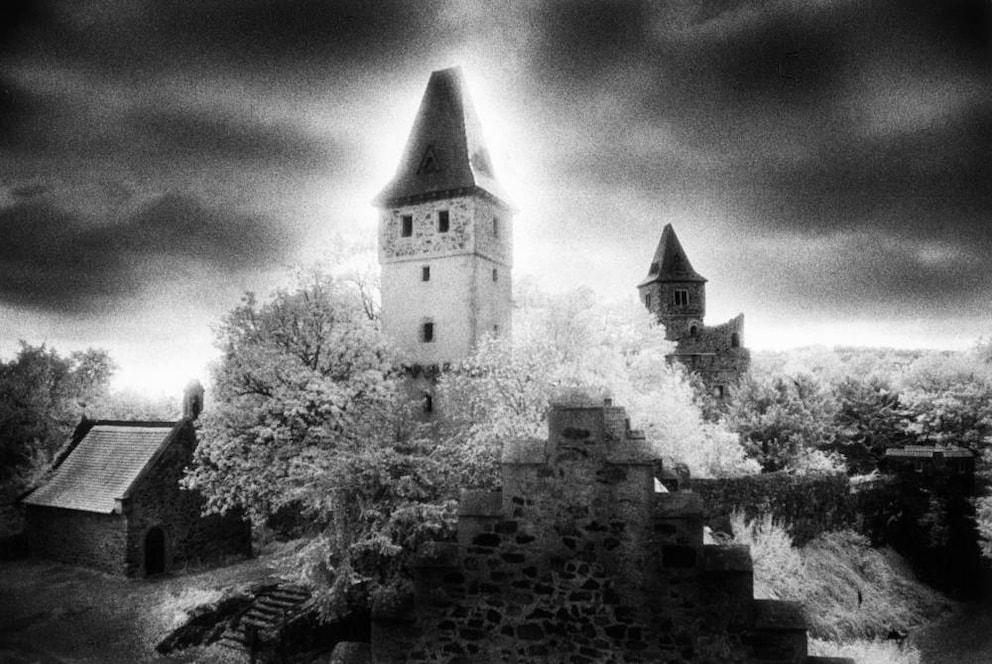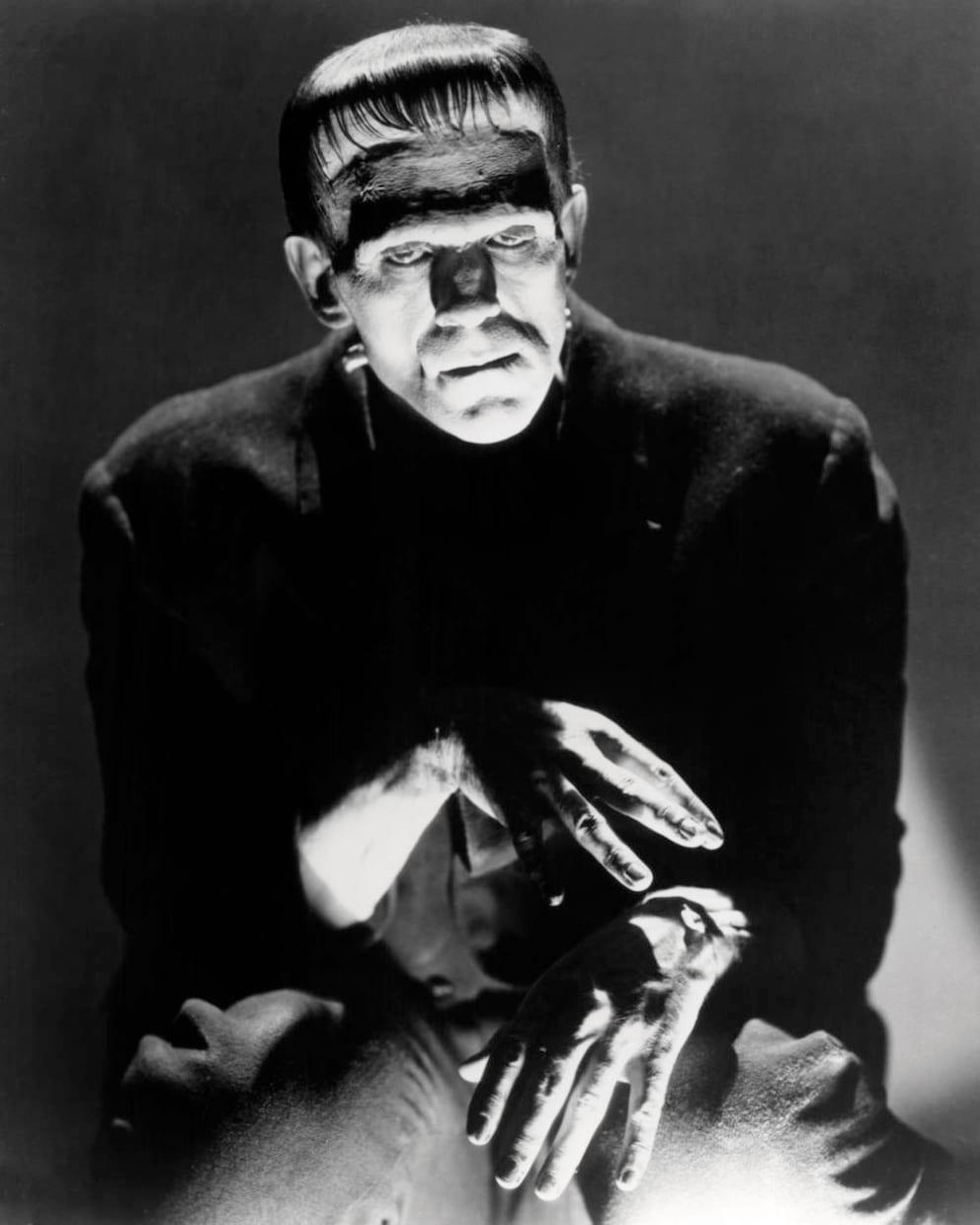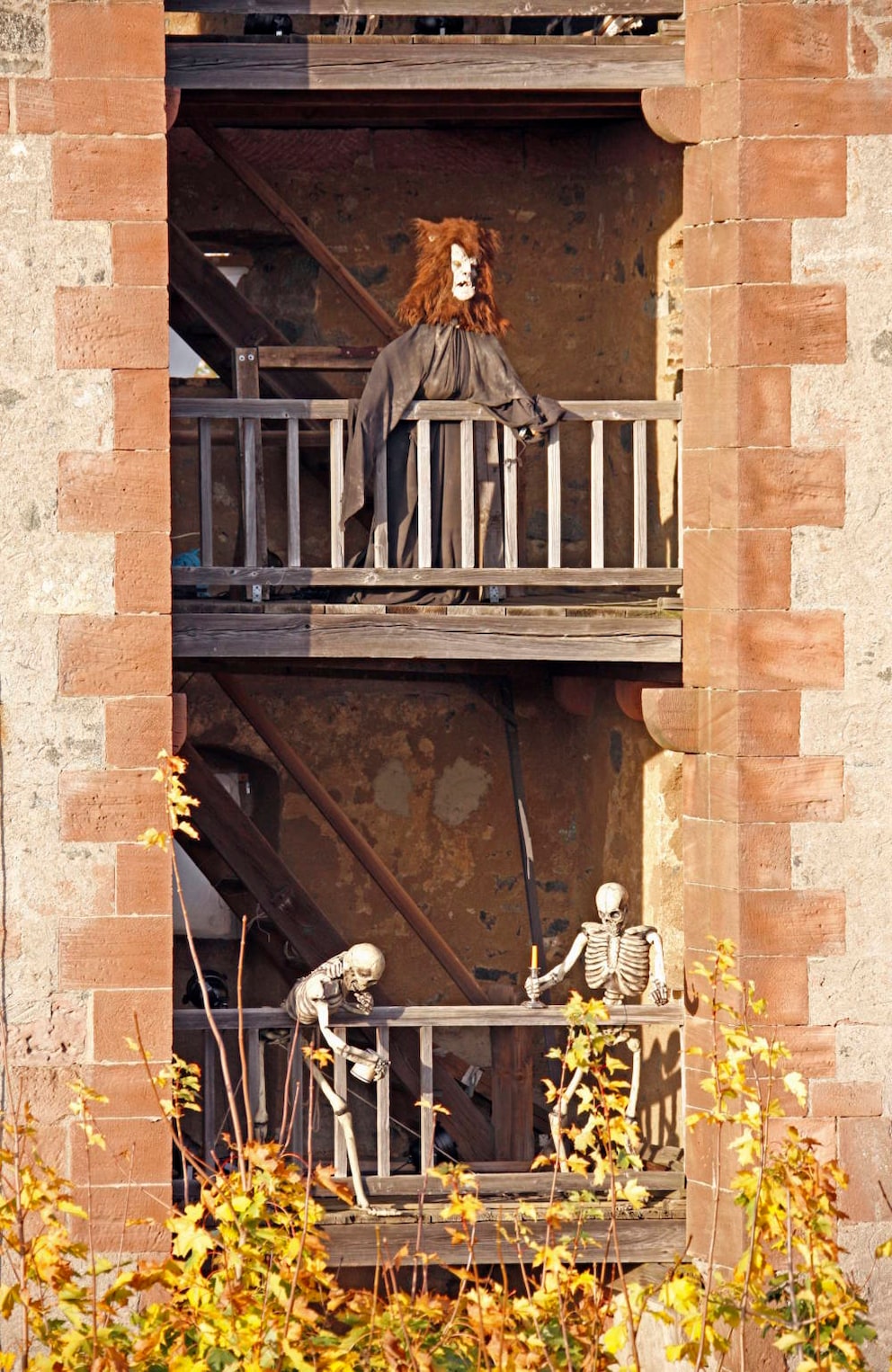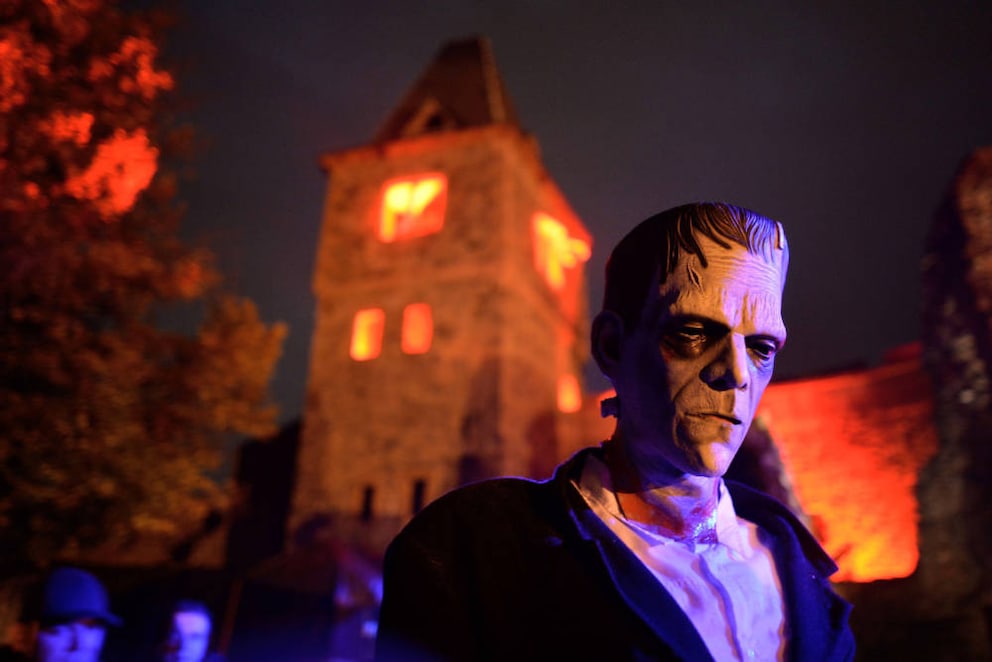October 16, 2018, 2:40 pm | Read time: 5 minutes
Frankenstein Castle in Hesse is a must-visit for horror enthusiasts in Germany. The myths surrounding mad alchemists, witches, ghostly knights–and a world-famous author–are to blame.
Near Darmstadt, in the otherwise tranquil Bergstraße region of Hesse, lies a place that sends a shiver down the spine of mystery fans just by its name: Frankenstein Castle, a structure over 750 years old that rises 400 meters above the Rhine plain. The castle is largely in ruins, but the many legends surrounding it are as alive as ever. Over the years, rumors have circulated about ghosts, witch cults, a mad alchemist–and a famous author.

Legend has it that none other than Mary Shelley came up with the idea for her later world bestseller “Frankenstein” when she visited the castle in 1814 with her future husband and half-sister. Whether she was actually there is still debated by experts today. Shows like “Galileo Mystery” have dedicated entire specials to this topic and Frankenstein Castle itself. What is certain is that Shelley was indeed in Germany and took a Rhine cruise; her diary entries clearly show that she was at least near Frankenstein Castle, specifically in Gernsheim, about 20 kilometers away.
Also interesting: Beelitz-Heilstätten – What became of Germany’s creepiest clinic
The Eerie Legend of Alchemist Johann Konrad Dippel

Author Walter Scheele is convinced that Frankenstein Castle served as inspiration for Shelley’s novel of the same name, and he presents another eerie legend as supposed evidence: that of alchemist Johann Konrad Dippel. Born at the castle in 1673, he is said to have been the living model for the mad Professor Frankenstein, who in his madness creates a creature and then brings it to life. Dippel allegedly, as even found on an official website of the castle, “wanted to create a ‘new human’ from body parts and the blood of virgins, as well as ‘secret arts.'”
The site further explains that chronicler and fairy tale inventor Jacob Grimm, one of the Brothers Grimm, wrote down the story of alchemist Dippel and sent it by letter to Mary Jane Clairmont–none other than Mary Shelley’s stepmother. Dippel is also said to have experimented with the explosive nitroglycerin, according to folklore. However, the substance had not yet been invented during Dippel’s lifetime, and Walter Scheele’s theories were rejected by the Eberstadt-Frankenstein Historical Society.
Also interesting: Creepy happenings in this abandoned hotel in the Black Forest

Nearby: the Mystical Ilbes-Berg
Nevertheless, the legend of Frankenstein Castle continues to captivate people today, and even the American show “Ghost Hunters International” filmed a special here, where they allegedly detected the wailing of a ghostly knight, whose actual past existence must be questioned.
Quite real, however, is a mystical place near the castle, namely the Ilbes-Berg, where there are magnetic stones for unknown reasons. These are said to have been created by witches, and some sources claim that Ilbes-Berg was the second-largest cult site for witches in all of Germany (after the Brocken in the Harz). The chronicles of the Landgraviate of Hesse-Darmstadt at least document that Griesheim, near the castle, was indeed a meeting place for alleged witches.
The best deals & stories: Sign up now for the TRAVELBOOK newsletter!

Which of these places is the spookiest in Germany?

The Eerie Cruise Ship That Is Now a Hotel

16 Extraordinary Christmas Markets in Germany
Regular Halloween Parties Held Here Today
In the 18th century, a very different, yet real, frenzy haunted the castle: a veritable gold rush, stemming from another legend. The ruins of a nearby former fortress were supposedly connected to Frankenstein Castle by underground passages–and in these passages, a fabled treasure was said to be hidden. In 1763, according to chroniclers, the entire surrounding area was dug up in search of gold, without finding the slightest evidence of a treasure. Nevertheless, fortune seekers continued their quest in the following years, leading to a fatal accident a few years later, as reported by pastor and historian Heinrich Eduard Scriba in his 1853 book “History of the Former Castle and Lordship of Frankenstein and Their Lords.”
And even today, the castle remains a site of terror, albeit a very worldly one: Every October and November, the now nationally famous Halloween parties take place here, so popular that Deutsche Bahn has even set up special trains for them in recent years. And who knows, perhaps among vampires and werewolves, you’ll really encounter Frankenstein’s monster.
Also interesting: An overview of school holiday dates in Hesse
The 41st edition is themed “We’re going bigger.” Frankenstein won’t be part of it this year, but well-known hellish figures will be, including Freddy Krueger–a fictional serial killer and main character of the “Nightmare” film series. The event was initiated by American troops stationed in southern Hesse in 1977. The show begins on Friday, October 19, 2018.


